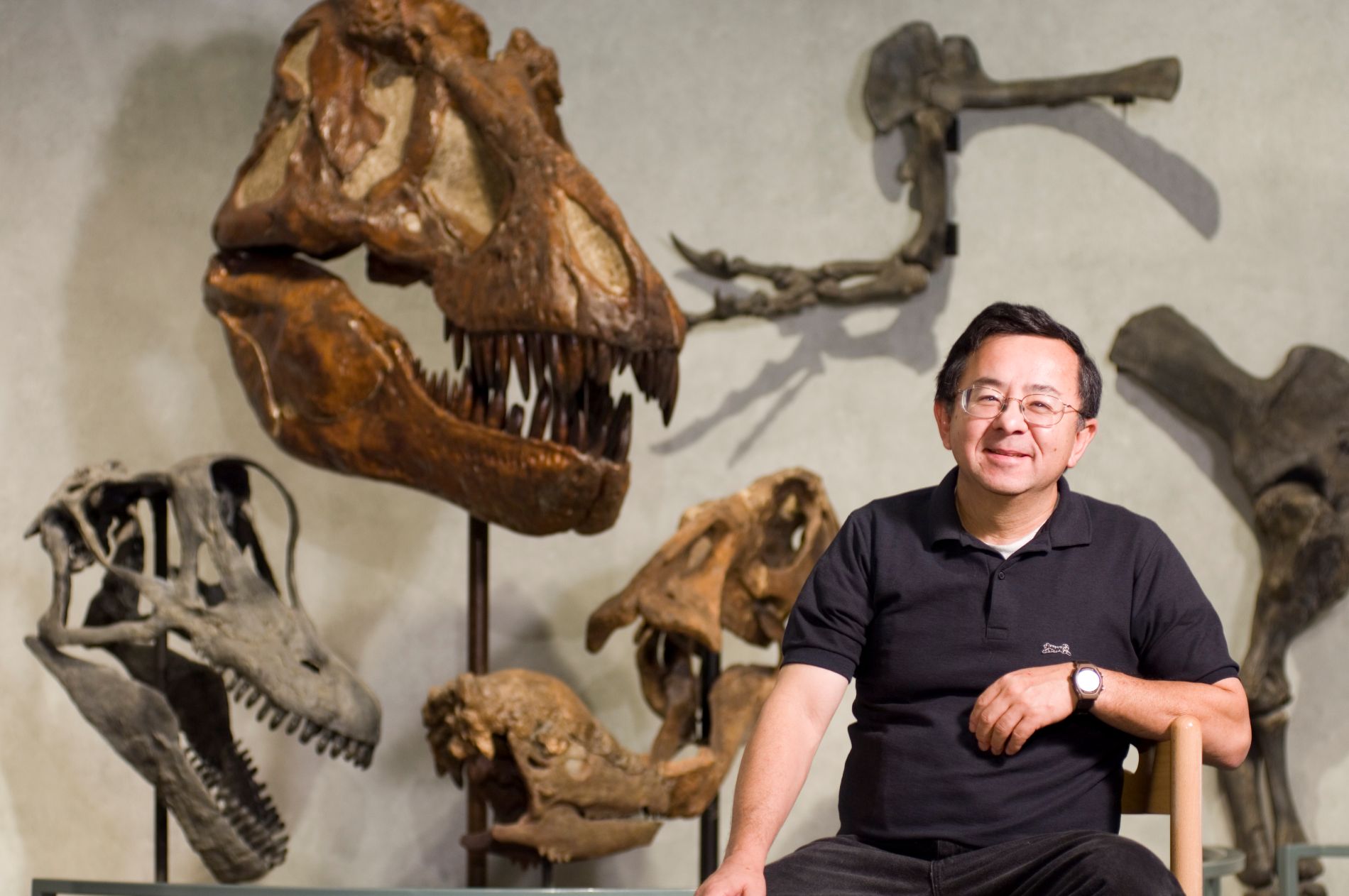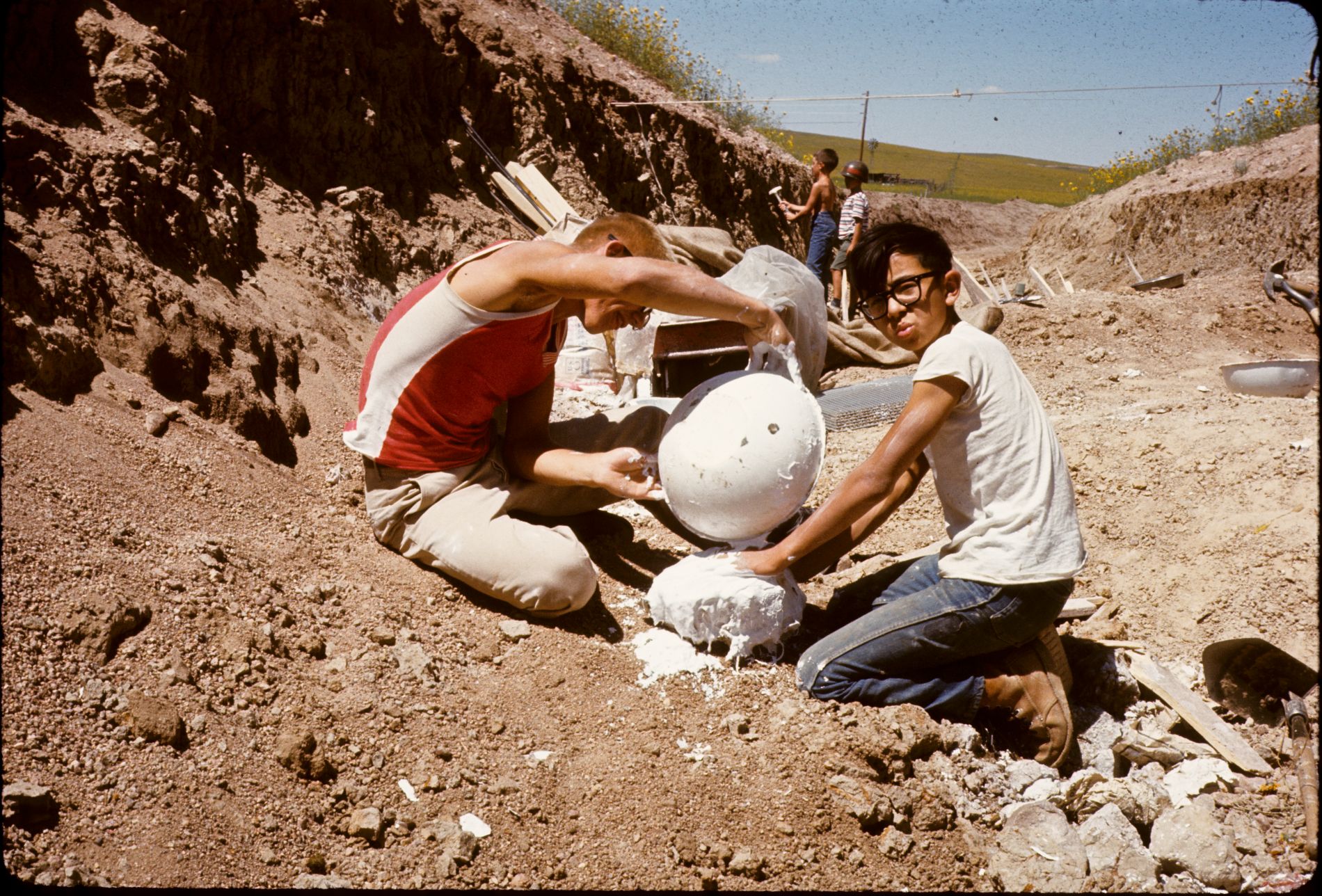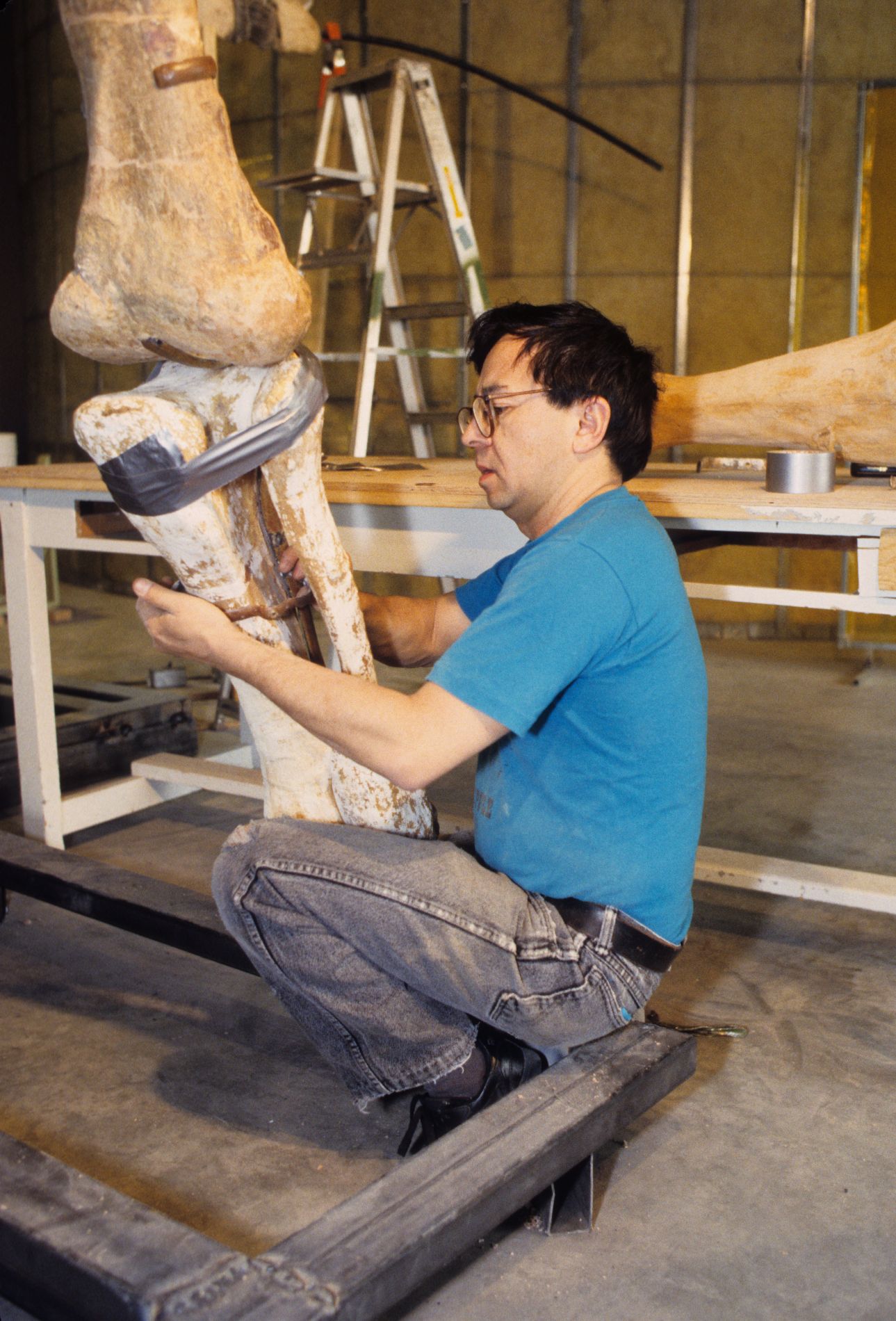CATALYST
DENVER MUSEUM OF NATURE & SCIENCE ONLINE MAGAZINE
Asian American, Pacific Islander Heritage at the Museum
Celebrating the Legacy of Kenneth Carpenter, an Innovative Paleontologist and Fossil Preparator

Ken Carpenter in the Prehistoric Journey exhibition at the Denver Museum of Nature & Science in 2006. (Photo/ Denver Museum of Nature & Science)
For Asian American, Native Hawaiian and Pacific Islander (AANHPI) Heritage Month, we want to highlight Kenneth Carpenter—paleontologist, preparator and innovator—whose career has helped shape the Denver Museum of Nature & Science and our modern dinosaur exhibitions. Born in Tokyo, Carpenter spent part of his childhood in Okinawa, where a fascination with fossils and dinosaurs took hold early, sparked, fittingly, when his mother took him at the age of five to see the film Godzilla.
Carpenter’s future took a defining turn in 1969 when, as a teenager in Colorado Springs, he discovered the fossilized pelvis of a ground sloth in a suburban neighborhood. Encouraged by his science teacher, he brought the find to the attention of the Museum. With Museum staff, Carpenter assisted in the excavation—his first hands-on experience with professional paleontology. That moment solidified a connection to the Museum that had begun in the late 1950s, when Carpenter first visited and stood in awe of the towering diplodocus. He decided that day he wanted to work at the Museum, never imagining he’d one day be the person to dismantle and remount that very skeleton!

Ken Carpenter excavating a Harlan ground sloth near Colorado Springs in 1969. (Photo/ John McMinn)
After studying at the University of Colorado Boulder and gaining hands-on experience at museums across the country, Carpenter returned to Denver in 1989 as Chief Preparator. As part of a collaborative team of science, exhibits and education guiding the development of "Prehistoric Journey," he led the dismantling and remounting of dozens of fossil skeletons. Carpenter brought a fresh philosophy to fossil mounting, shifting away from static “trophy” poses toward dynamic, lifelike displays. His goal was to make the dinosaurs truly come alive for visitors, infusing each mount with movement, energy and even a sense of play.

Ken Carpenter re-articulating stegosaurus skeleton for the Prehistoric Journey exhibition in 1993. (Photo/ Denver Museum of Nature & Science)
Over his career, Carpenter discovered multiple new dinosaur species, authored and edited numerous scientific volumes, and mentored volunteers and students alike—often including them as co-authors in published research. His work in Utah’s Cedar Mountain Formation and meticulous lab techniques contributed significantly to our understanding of Jurassic and Cretaceous life.
He also developed a fossil prep training course for volunteers, pushing back against exclusivity in science and inviting broader participation in paleontological work. His volunteer field crew became known as the “Horde from the East,” a badge of honor born out of academic rivalry and fueled by dedication.
In 2010, Carpenter left the Museum to direct the Prehistoric Museum at the College of Eastern Utah. But his impact in Denver endures — in every dynamic pose, every fossil prepared by a volunteer, and every visitor inspired by the prehistoric stories he helped bring to life.
----
From the ancient past to the present day, from land to sea to sky, the Denver Museum of Nature & Science offers an unparalleled opportunity to discover and explore the wonders of the natural world that surrounds us. Come visit us at the Museum. Get tickets, here!
Learn more about membership benefits, here.





